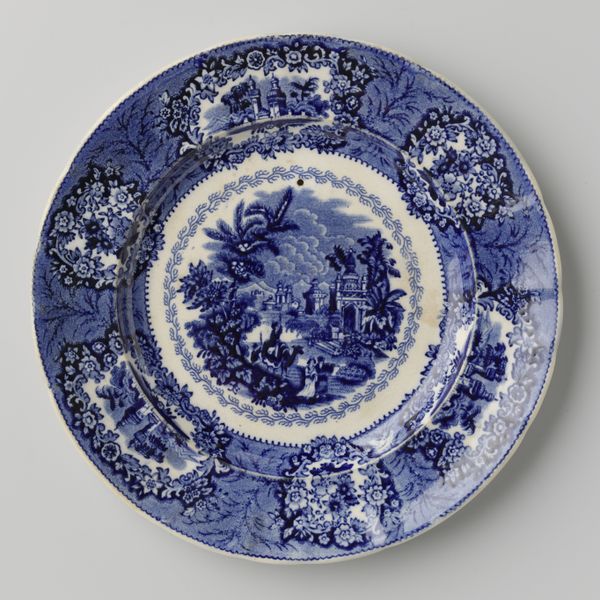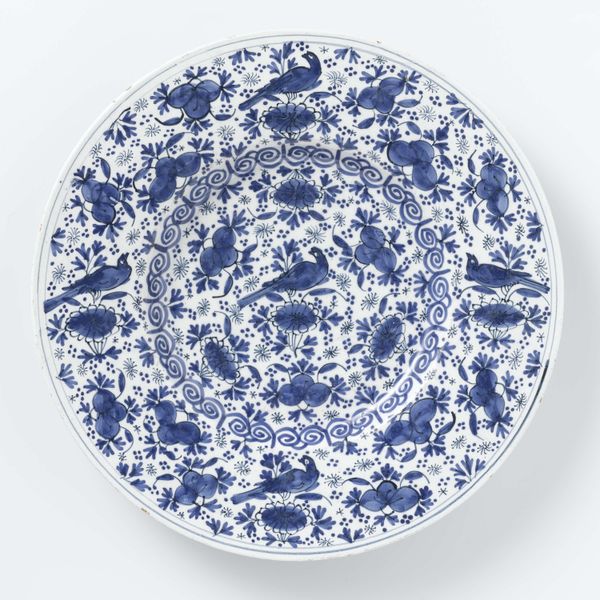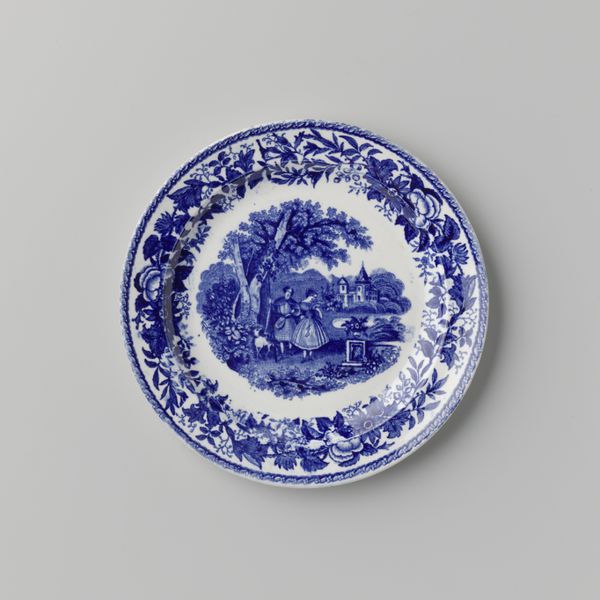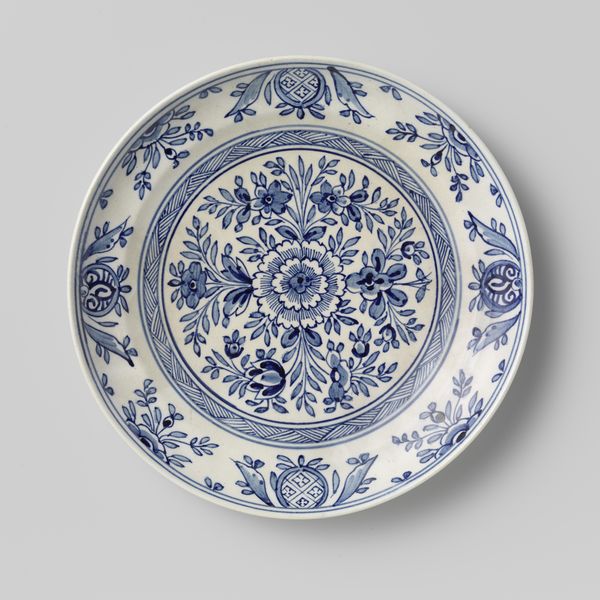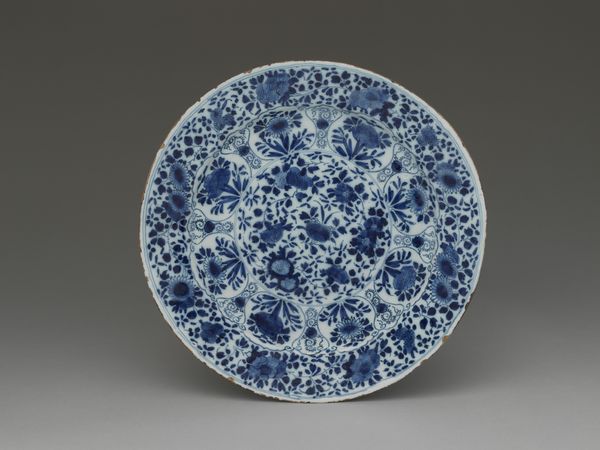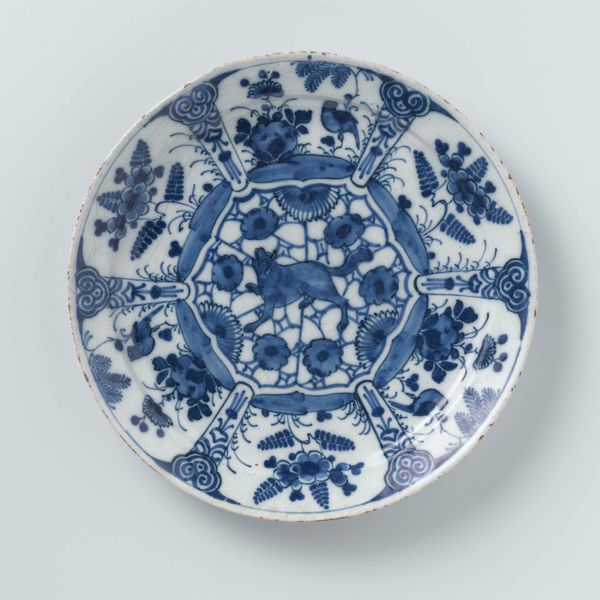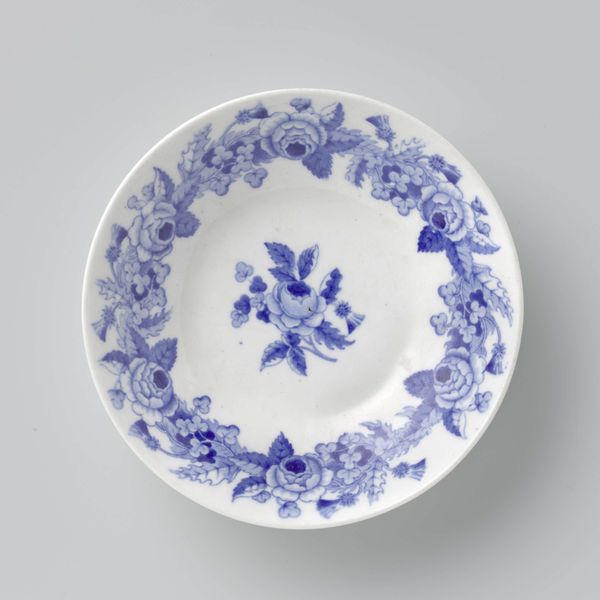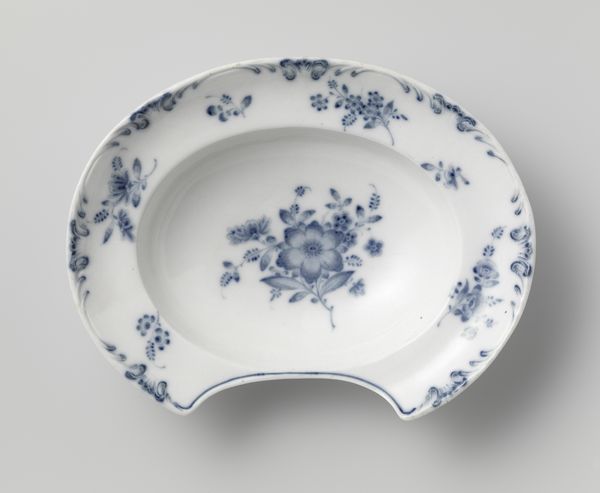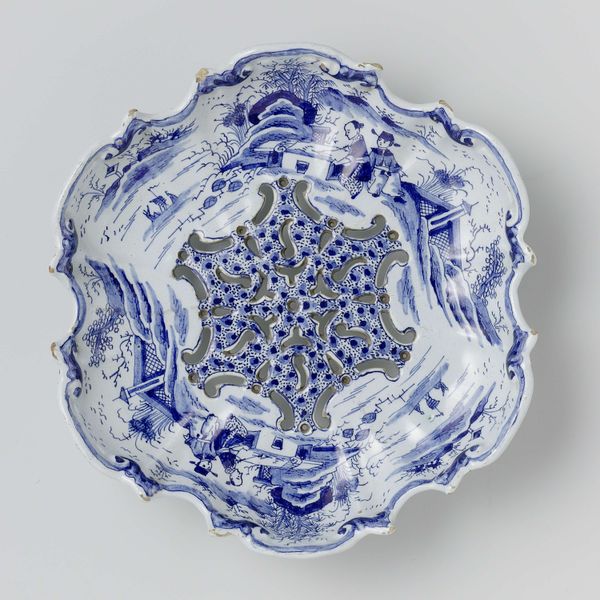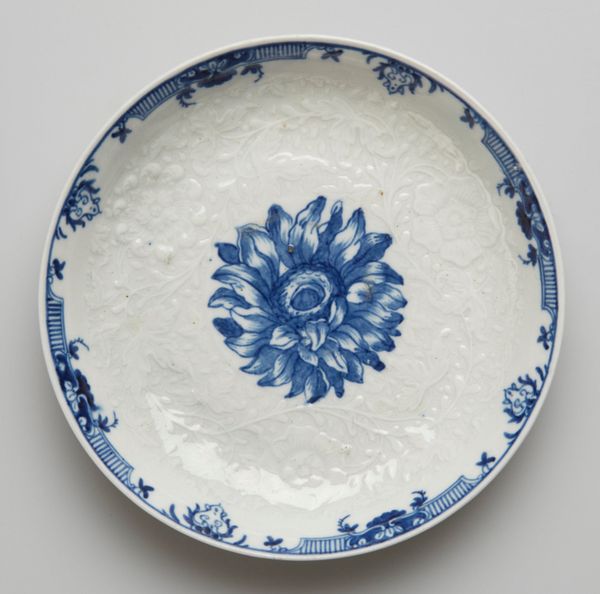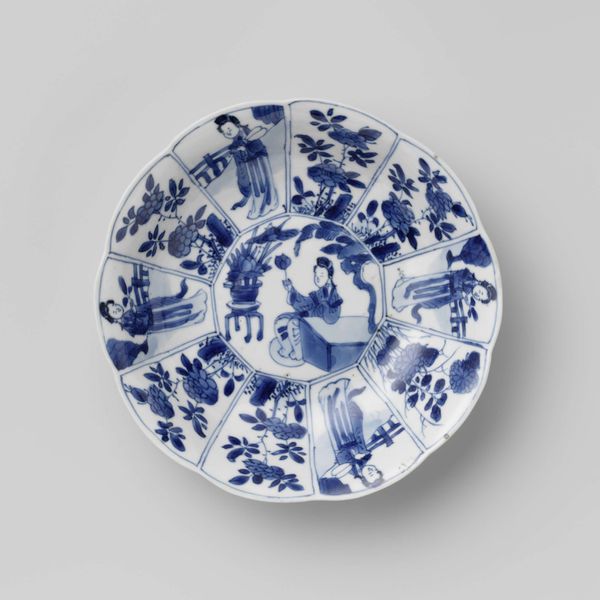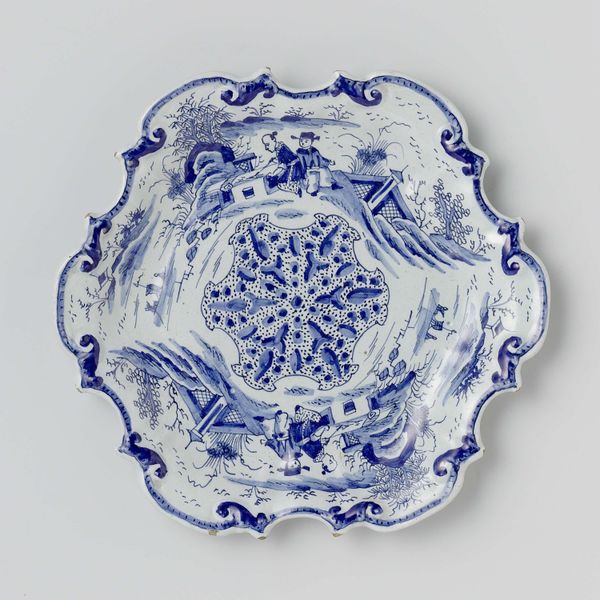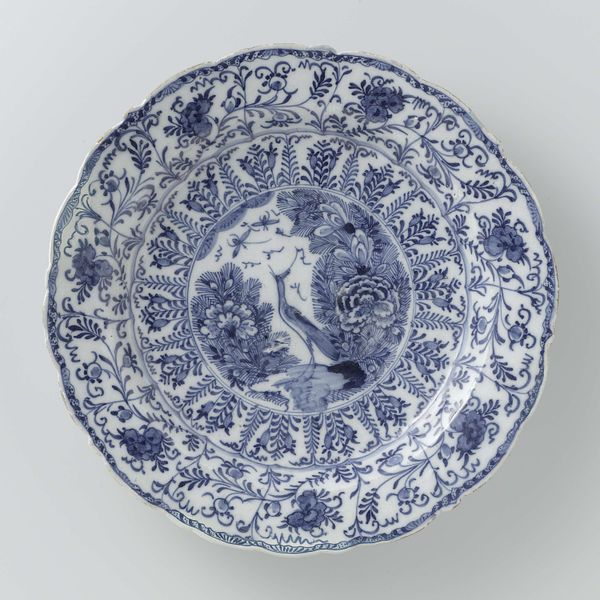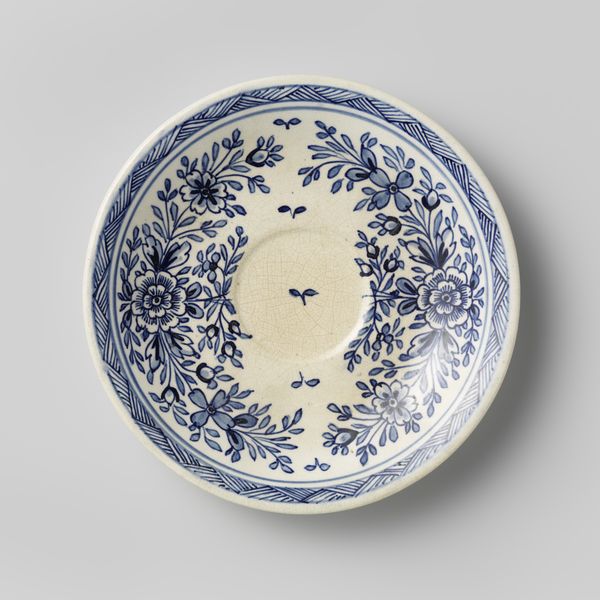
ceramic, earthenware
#
ceramic
#
earthenware
#
decorative-art
Dimensions: height 3.0 cm, diameter 25.4 cm
Copyright: Rijks Museum: Open Domain
Curator: Today, we’re looking at an earthenware plate made by Fabriek Clermont en Chainaye around the 1850s. It features a lovely, densely patterned parsemé decor. Editor: It’s overwhelmingly floral! Almost claustrophobic, in a way. The blue and white is classic, but there's just so much going on—it makes me feel a bit uneasy. Curator: Interesting. Well, this type of decoration involved meticulously scattering small sprigs or detached floral motifs across the surface. It was a popular technique at the time to mimic more luxurious fabrics. The factory likely employed specialized laborers for the transfer printing of the design. We also see echoes of Asian art here, don't you think? Editor: Absolutely. You see the way Western makers have adapted motifs from Chinese blue-and-white porcelain but in a flattened way that serves the design over any meaningful cultural quotation. It also prompts me to consider consumption - who was purchasing this type of item? And what did owning decorative pieces such as this mean for the burgeoning middle class of the time? Were they engaging in a performative consumption, adopting aesthetic choices associated with the elite? Curator: That's an excellent point about social aspirations. We could also see this as the factory's attempt to democratize access to visually rich environments. How the company negotiated material accessibility, the labor they contracted and the aesthetics and consumption trends among buyers certainly tell us much about 19th century European society. Editor: Right, a product geared toward those desiring aesthetic appeal without the hefty price tag. I suppose in that respect there's a radical element too – disrupting the art-historical obsession with originals over and against reproduced works. Curator: I agree. Seeing this plate moves us past notions of artistic genius to examine the real dynamics of labor and artistic diffusion in a time of massive social and technological change. Editor: Exactly! It asks us to be thoughtful about what objects say about identity, aspiration and our relationship with beauty itself. Curator: Thanks to this dialogue, hopefully our visitors gain a broader understanding of how such everyday objects embody economic conditions and the values of their time. Editor: Agreed. Art exists beyond grand canvases, as demonstrated here, inviting inquiry and nuanced interpretation!
Comments
No comments
Be the first to comment and join the conversation on the ultimate creative platform.
